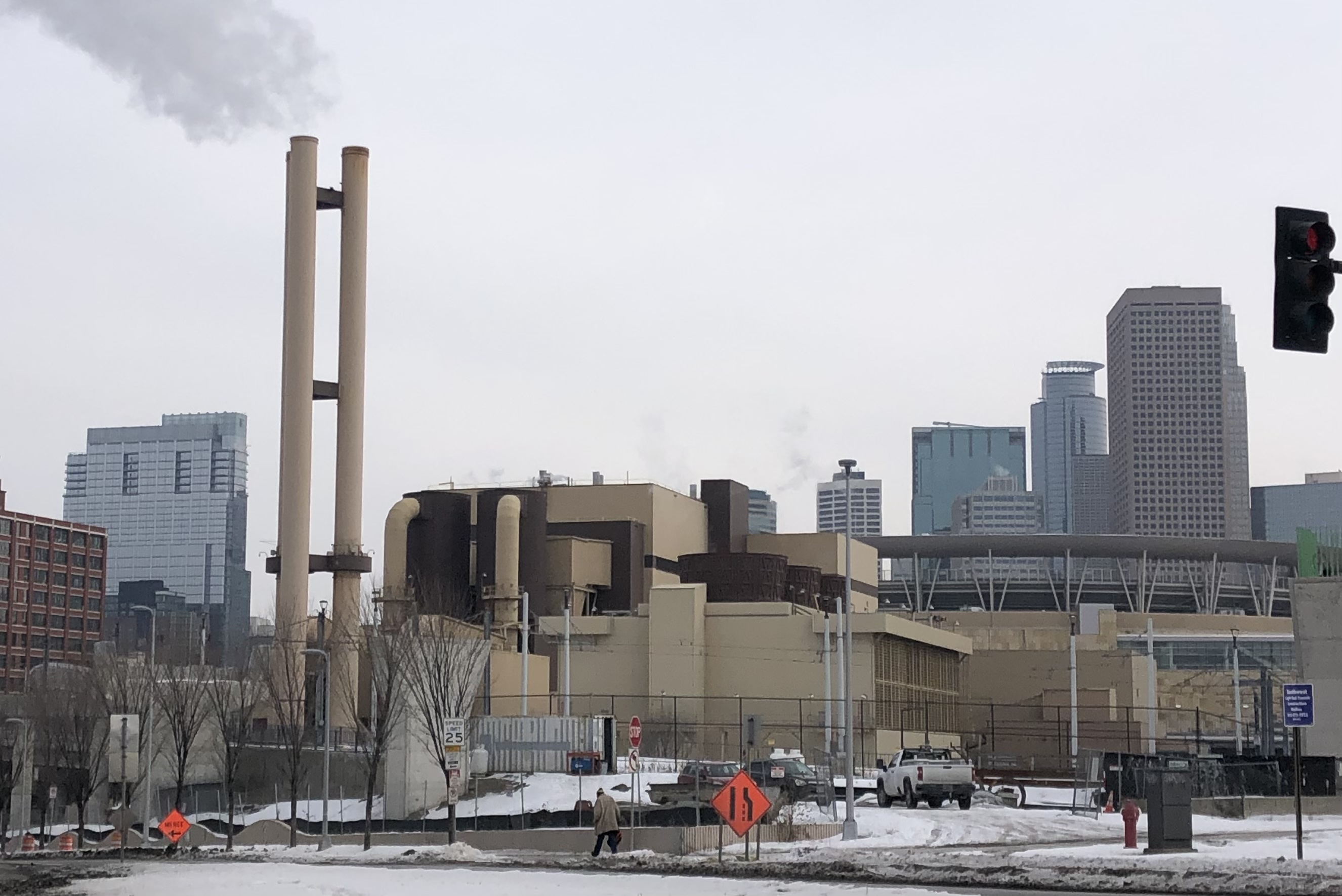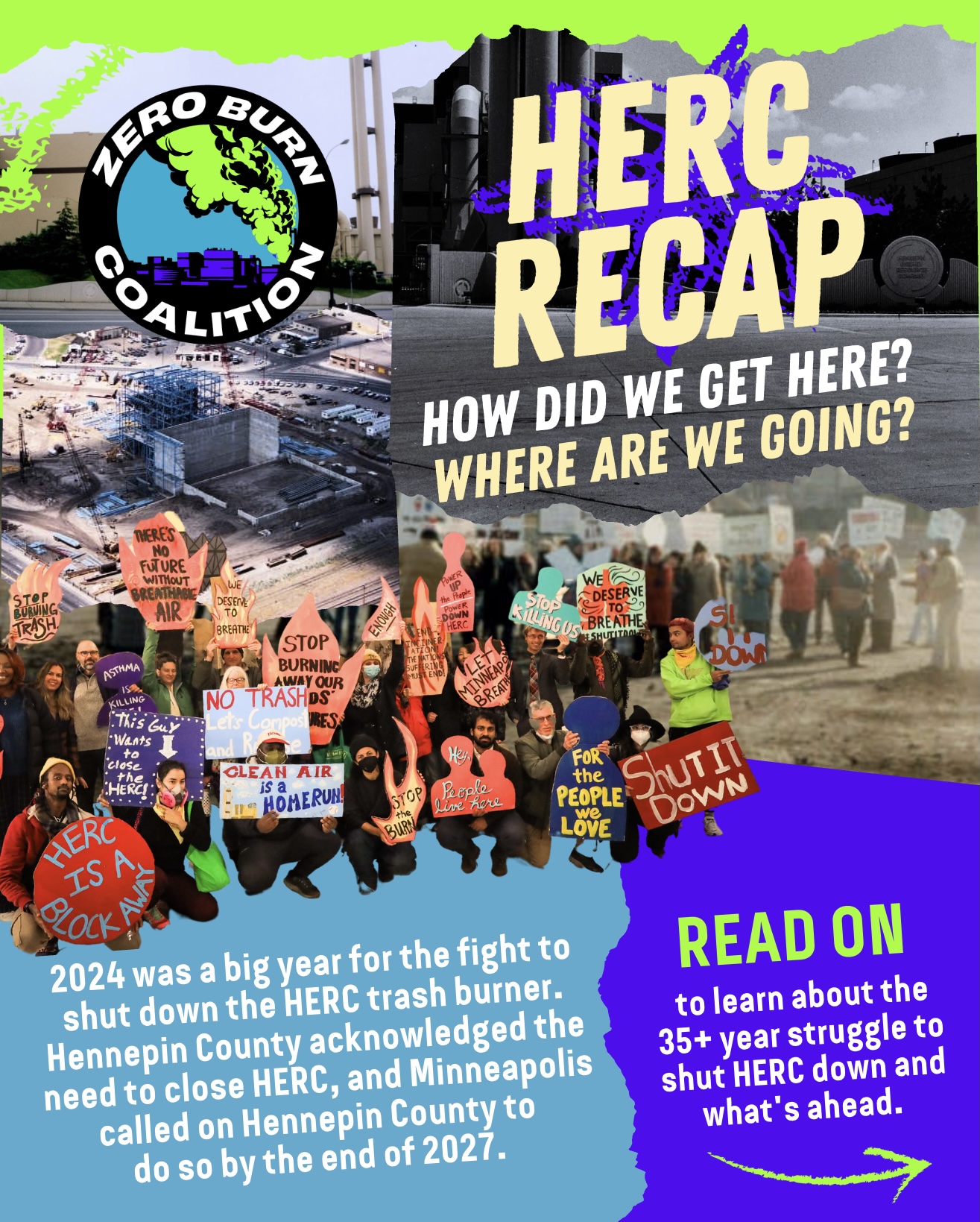HERC Shutdown
A guide to the health risks and other detriments of waste incineration

That future can be one where another generation of ZIP code 55411 residents like me live and die with the highest asthma hospitalization rate in the state, or a future where our county becomes a leader in implementing a zero-waste plan that cleans the air, reduces and manages our waste responsibly and saves lives.
Stephani Maari Booker
The Hennepin Energy Recovery Center (HERC) is a waste incinerator that opened in 1989 amidst community opposition. Trash from Minneapolis and surrounding suburbs is sent to the HERC where it is burned to recover metals and to generate electricity and steam.
Advocates for the HERC have touted it as an effective strategy for reducing landfill usage and creating energy, but they have routinely downplayed its negative health, environmental, and social impacts. They also fail to mention that waste incineration creates large amounts of toxic ash that must be sent to a landfill. This site reviews and explains the breadth of current knowledge on the HERC and the transition to zero waste.
For a detailed look at the history of the struggle against HERC, click the image below. The slideshow outlines how activists fought to prevent HERC from being built in the 1980s and have been working to shut it down since it was built. (Accompanying sources and alt-text)
